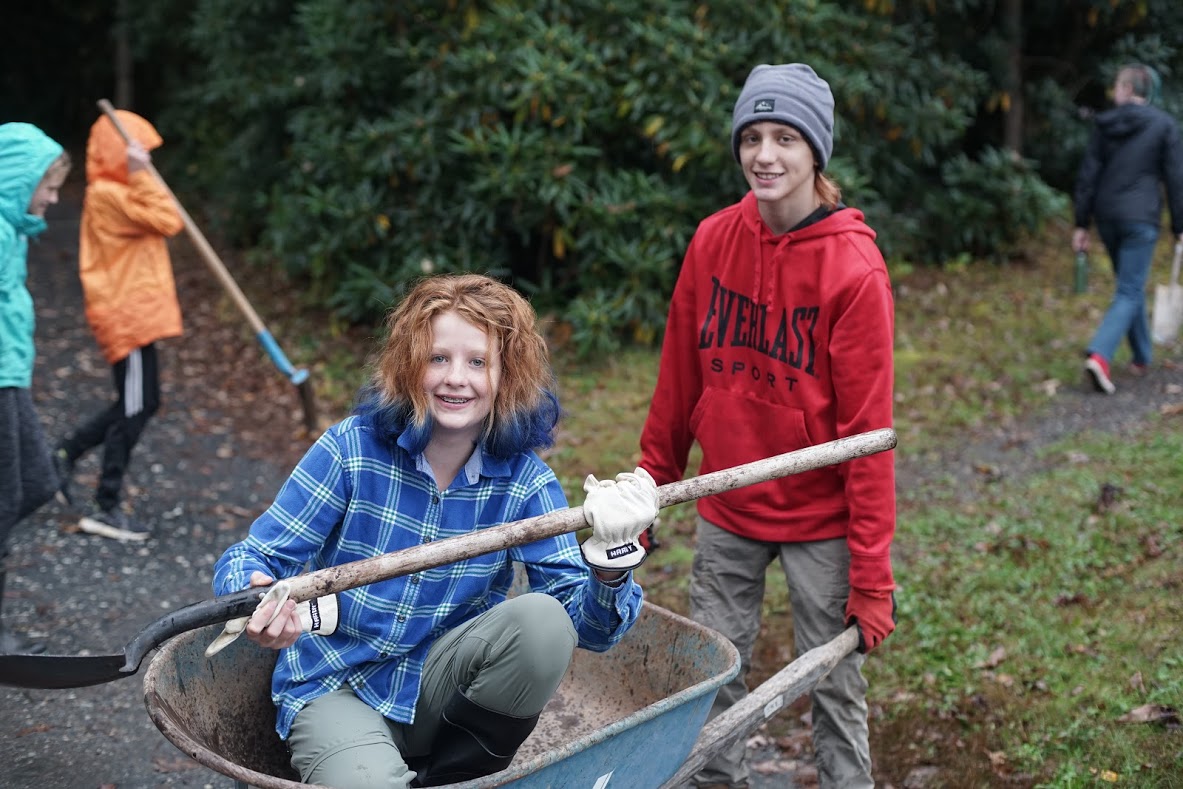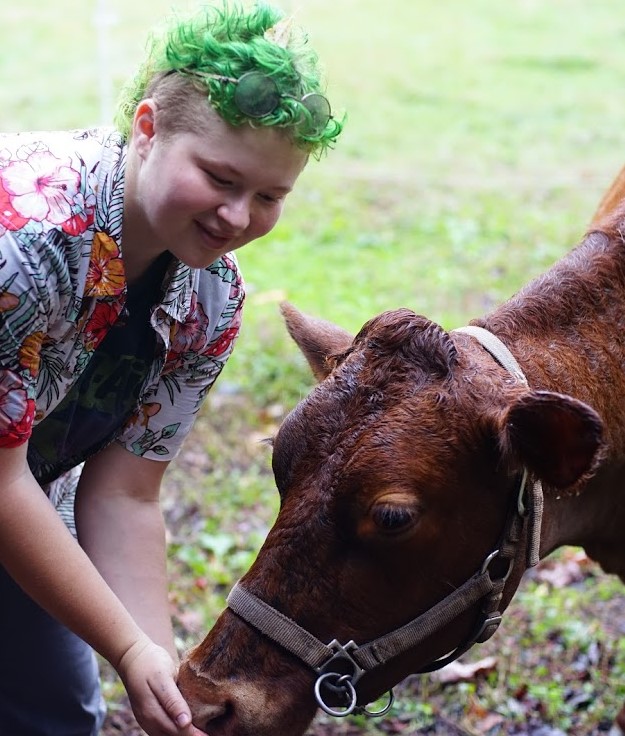Why Should Teenagers Work?

As a consensus-run school, AMS practices, traditions and norms are heavily shaped by community dialogue. One question recently mulled over during our All School Meeting was “Why Should Teenagers Work?” And, from this lively discussion, we heard strong support for school traditions built around student labor.
Some of the most nourishing experiences of AMS life emerge from our Wednesday all-school work projects. These 3 hour efforts both maintain the integrity of the school and cultivate a deep connectedness to our unique campus-in-the- woods.
During these periods, work project teams might mend rutted roads; prepare delicious snack time treats and lunch; harvest vegetables; or chop literal tons of wood. Working collaboratively, sometimes in less than ideal weather conditions, we come together to problem solve and share stories, and have a lot of laughs in the process!

“Sweat Equity”
The mountain climate can take a toll on our infrastructure, and thus requires that we all invest a lot of love, in the form of “sweat equity,” into our buildings, grounds and roads. And the benefits to us personally are manyfold, including both short-term and lasting senses of accomplishment.
Watching your peers gleefully devour second helpings of the meal you’ve provided for them or standing back to marvel at the mountain of wood you’ve chopped, knowing it will keep us all warm during our windswept winters, brings a particular sort of satisfaction. And alumni returning years, or even decades, later, can see the labors of their love preserved, as monuments, in a mural painted or bridge built with their own hands.
The skills we all develop as a result of these work projects can also last a lifetime. Students and staff learn to use both simple machines and power tools, integrating math and science lessons learned in the classroom into real-life scenarios. Likewise, we all hold close the memories of mud-stuck trucks, escaped cows and treasure hunts at the dump for many years to come.
“Never Be Finished”
And so, each Wednesday we are able to turn the challenge of manual labor into lessons learned, skills honed and memories made. As we do, we pass along to the next generation of AMS community members that which we create today, just as their labors will lay the groundwork for future additions to the school. In this way, we realize the vision of the ideal school which adorns AMS’s wood shop door which states, “A school should be built by the children, should seek to be self-supporting, and should never be finished.”
-by Brad Archer
